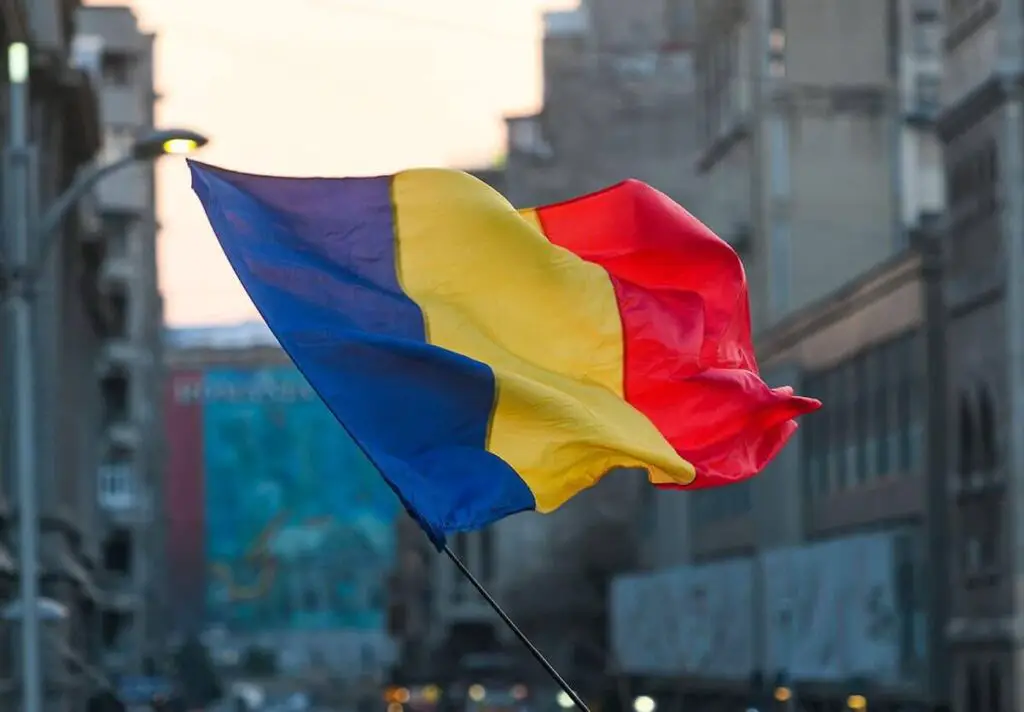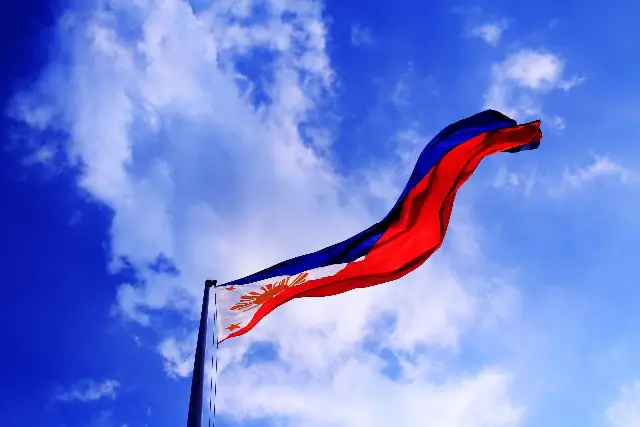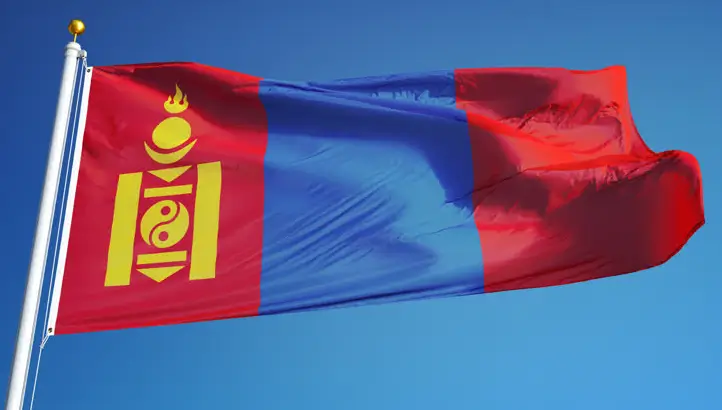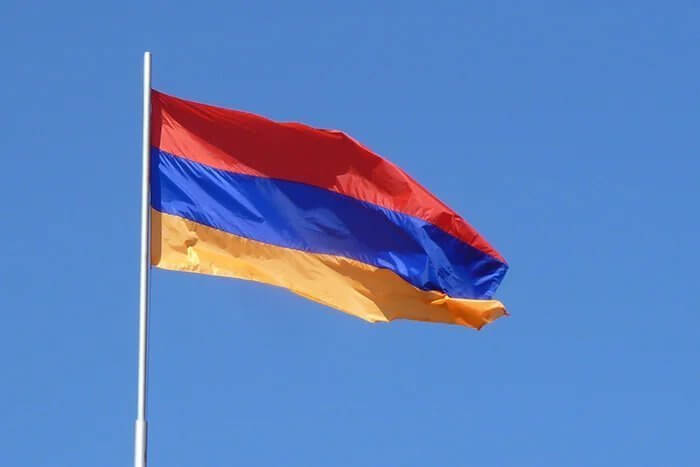Last Updated on July 10, 2023 By Emma W. Thomas
Different countries use flags to represent their government, principles, and truth. The flags also symbolize a country’s history, people, goals, and values, unique to a particular country. Some of the countries with yellow, blue, and red flags include; Romania, Chad, DRC, Philippines, Andorra, Romania, Columbia, and Armenia.
This article highlights the meaning of the different colors used in a flag and What countries have yellow blue and red flags. Read on!
What is the meaning of different colors in a flag?
Different colors have unique meanings when used on a flag. This table summarizes the various colors and what they symbolize:
| Color | Where used | Meaning and symbolism |
| Red | Most countries that were colonized | Bloodshed. Symbolizes power, strength, and energy used to fight for freedom. |
| Blue | Free countries | Freedom. Symbolizes prosperity, patriotism, positivity, and perseverance |
| Yellow | A country with varying wealth sources | A nation’s wealth, for example, minerals. It symbolizes happiness. |
| White | Sometimes used in times of battle to show surrender. | Symbolizes peace, harmony, and purity |
| Black | Sometimes used to represent mourning or death. | Represents ethnic heritage, determination, and the defeat of the enemy. |
What countries have yellow blue and red flags
Several countries have red, yellow, and blue flags, each with varying designs and features. Some of these countries are;
Romania

The Romanian flag dates back to 1934 with blue, yellow, and red colors in similar stripes that are vertical. This flag is identical in color, design, and length to Chad’s and Andorra’s. But Andorra’s flag has a coat of arms in the middle i.e. on the yellow stripe.
The yellow bar signifies justice in the Romanian flag, blue symbolizes freedom, and red represents the people.
Andorra

This country’s flag also has three vertical stripes, similar to the Romanian. It has blue, yellow, and red bars running from left to right. The yellow bar has a coat of arms. The red and blue stripes have the same width, but the middle or yellow strip is wider.
The three colors in this flag are identical to France’s, and the middle wider strip resembles that of Spain’s flag. This flag was administered by France and Spain and is similar to these countries’ flags. The coat of arms symbolized a treaty between the Count of Foix and the Bishop of Urgell. In this agreement, Christianity was allowed to spread in the provinces of Bearn and Catalonia.
At the bottom right of the coat of arms are two red cows that symbolize the region of Bearn. There is also a motto that reads ‘’strength united is stronger’’.
Chad

Chad’s flag is similar in features and design to the Romanian flag, but the colors are slightly blunt. The red and blue colors in Chad’s flag were adopted from France’s flag, which colonized the country, and were combined with yellow, a Pan-African color. This flag came to be on 6th November 1959.
In this flag, yellow stands for the desert and the sun, and blue is for the sky and citizens’ hope. Conversely, red stands for the bloodshed by the people while fighting for their liberty.
Philippine

This country’s flag is rectangular and dates back to 1897. It has a white equilateral triangle on one edge of the rectangle consisting of a sun’s face with eight rays and three stars. The stars and the sun are yellow, and the other parts of the flag are composed of identical blue and red stripes.
In the Philippine flag, the red color symbolizes the people’s patriotism and courage seen during the war. Blue shows the desire for the Philippines to attain freedom and resist the enemy. It also symbolizes truth, peace, and justice. White shows that the Philippines can govern themselves and their belief in equality.
The Philippines has eight provinces represented by the eight rays of the sun. Their flag also has a sun’s face, which indicates the light that hits each corner of the country. Three stars represent the major islands in the Philippines: Mindanao, Luzon, and the Visayas.
Democratic Republic of Congo

DRC adopted its sky blue flag on 20th February 2006. A red stripe bordered by two yellow stripes cuts diagonally in this rectangular flag. There is also a yellow star in the upper canton of the flag. Like other countries’ flags, each color has a significant meaning to the people living here.
The main shade in the DRC’s flag is sky blue, which symbolizes peace, and the red stripe stands for the blood that the people shed while struggling to gain independence. On the other hand, the star on the upper canton shows the people’s hope for a brighter future, while the yellow stripes represent the country’s wealth.
Mongolia

The Mongolian flag has two red stripes and a blue one of the same width. A Mongolian Soyombo symbol is encrypted at the center of the red bar on the left, while the other bars are plain. This flag was adopted on 12th January 1992, but the official colors were picked on 8th July 2011.
Each color has its unique meaning in this flag, with the red stripe symbolizing the country’s long-lasting peace. The blue bar stands for the sky, while the Soyombo represents the earth, sun, water, moon, and fire. Taijitu, on the other hand, represents yang and yin.
Columbia

The Columbian flag also has three colors, yellow, blue, and red, in horizontal stripes. Yellow covers half the flag and is at the top symbolizing the country’s wealth. This country is rich in harmony, justice, gold, agriculture, serenity, and the sun. The blue stripe symbolizes the sky, seas, and water flowing through this country, while the red stripe represents the bloodshed during the fight for freedom.
The Columbian people’s determination and persistence are shown using the red stripe.
Armenia

Armenia has its flag consisting of yellow, blue, and red bands of the same width. These bands start with the red one at the top, blue in the middle, and yellow at the bottom. This flag was adopted on 24th August 1990, and each shade has a different meaning from the other.
During the Armenian genocide, 1.5 million people were killed, symbolized by the red band on the flag. Red also represents the country’s highlands and its people’s struggle for survival, independence, and preservation of their faith in Christ.
Blue symbolizes the clear sky and the people’s desire to live in harmony and peace with each other in their land. Conversely, orange/yellow is a symbol of the country’s courage. It also stands for the Armenians’ creativity, hard work, and talents.
Aland

Aland, a country in Scandinavia, has its flag on a blue background consisting of a red cross. This red cross is inside a yellow Nordic cross giving it a unique design. The crosses have vertical bars tilting more to the left than right. Aland started using a flag in 1920 to symbolize the unity of Russia, Sweden, and Finland in preserving the Swedish culture.
Aland adopted its current flag in 1952 and derived its design from the Swedish flag, but the only distinctive feature is the red cross inside a yellow one. Since the islands of Aland are the independent province of Finland, the red cross represents Finland.
Moldova

The Moldova Republic is landlocked in Eastern Europe. Its flag was adopted on 6th November 1990 and consisted of three stripes, namely; blue, yellow, and red, from left to right. The central bar (yellow) has a coat of arms of Moldova. This flag is similar to Romania’s and represents the countries’ cultural and national affinity.
The shades on the flag represent three regions of Romania, i.e., Transylvania, Moldova, and Wallachia. Its coats of arms consist of a dark-golden eagle symbolizing the Latin origin of the Moldova people. On its beak, there is an Orthodox Christian cross standing for religion. There is also an olive branch representing peace.
The eagle’s aux head stands for independence, power, and the people’s pride.
Wrapping Up
Different countries worldwide use flags to signify common goals and beliefs and to show that the same rules and regulations govern them. Flags are national symbols for a country, and they have specific features and designs whose meaning is appreciated by the residents.
Different flags have varying colors with different meanings. For example, in most colonized countries, red appears as a symbol of bloodshed during their fight for independence. Blue is also common to show the liberty, patriotism, perseverance, and positivity of a country.
Yellow/orange symbolizes a nation’s riches, such as minerals. It is sometimes also used to represent the people’s happiness in a particular country.
References:
https://en.wikipedia.org/wiki/List_of_flags_by_color_combination
https://www.feri.org/yellow-blue-red-flags/
Emma is a graduate of Domestic Science or Family and Consumer Sciences (Home Economics) from the University of Wisconsin. She has 7 years of experience Working with the strategic section of BestBuy and now writing full-time for Homeeon.
From Managing the Home, Interiors, Cleaning, and Exteriors to Gardening and everything about Making A Home Liveable – is her passion and this Homeeon is the result of this.
Emma loves decorating her home with the best stuff found online. She cares about quality over anything and writes reviews about them here in Homeeon. Get in touch with her over Pinterest.
Keep reading her blogs.
